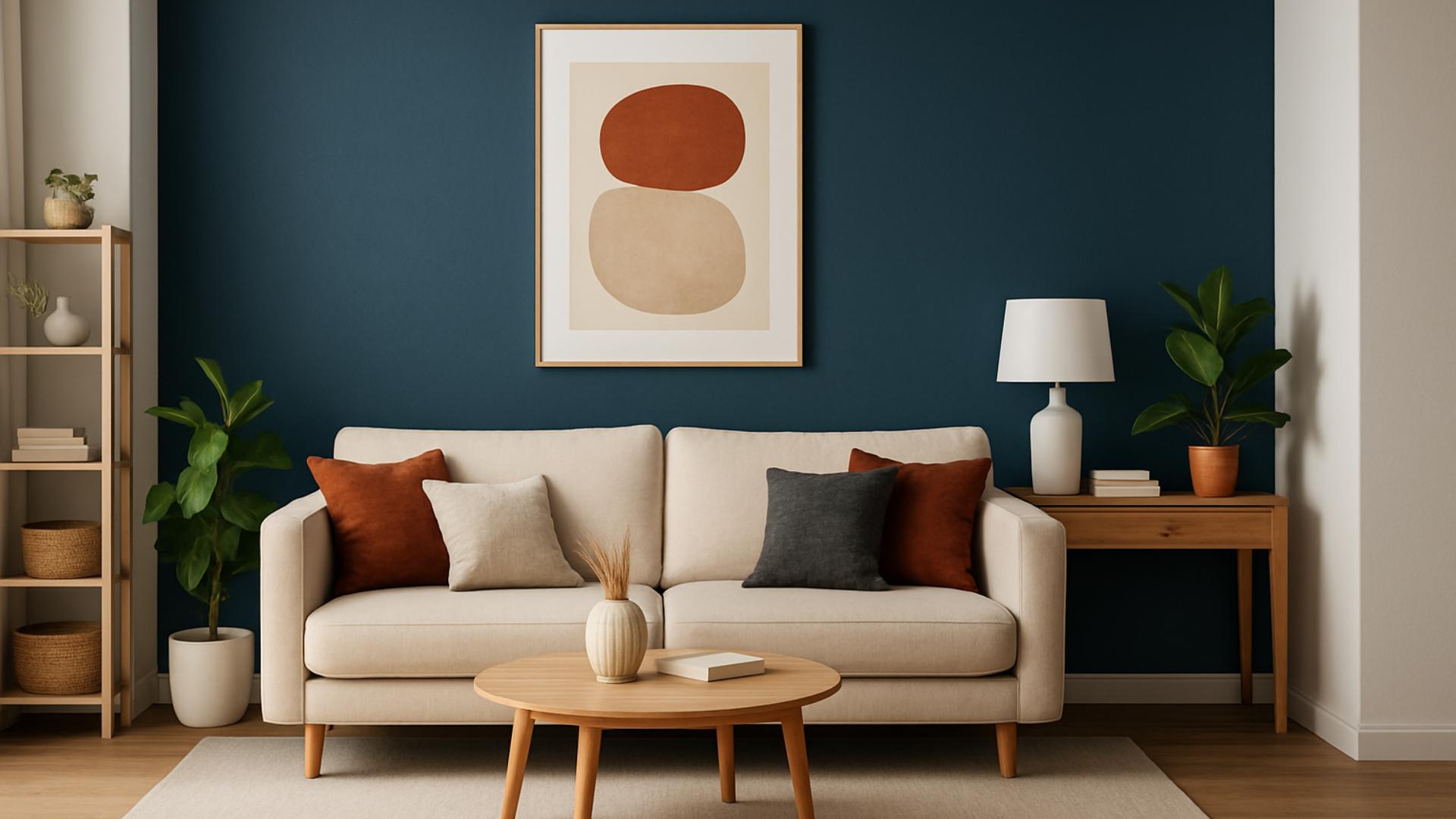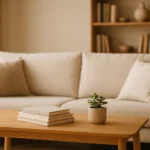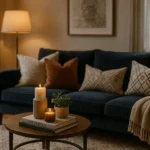The allure of a well-crafted accent wall is undeniable. It stands as a testament to our aspiration to turn the ordinary into the extraordinary. When we think about transforming our living spaces, the walls in our rooms often play the role of a silent canvas, waiting to be adorned and brought to life. But how do we harness this potential without overwhelming the entire space? Accent walls present a remarkable opportunity to redefine any room’s dynamics using a splash of color or a unique design. Today, we’re diving into the art and science of accent walls, understanding their impact, and unearthing the secrets to making them work harmoniously within your home.
Understanding the Power of Color
When we talk about accent walls, the first thing that usually comes to mind is color. The right shade can evoke emotions, alter atmospheres, and even influence our moods. But how do we choose the right hue?
The Psychology Behind Colors
Every color has its story, its own unique energy. Warm tones like red, orange, and pink can infuse a room with warmth and passion. These shades are perfect for spaces where energy and excitement are encouraged, such as the living room or kitchen.
In contrast, blue and green offer a more calming and serene environment. These colors are reminiscent of natural elements, making them ideal for relaxation areas like the bedroom. While white symbolizes purity and cleanliness, it’s an excellent backdrop for an accent wall that aims to stand out.
Choosing the Right Shade
When selecting a color, consider the room’s existing palette. Accent walls should complement, not clash. If your room already boasts bold colors, a muted or pastel accent wall might be the way to go. Alternatively, a bold shade can breathe life into an otherwise neutral space.
To ensure harmony, test different shades before committing. Painted swatches can reveal how different lighting affects each color throughout the day.
Tips for Consistency
The ceiling is often overlooked but plays a critical role in how colors are perceived. A lighter ceiling can make a room feel larger, while a darker one can add coziness. Using the same undertone in both the ceiling and walls will ensure a cohesive look throughout the space.
Design Elements Beyond Color
While color is a fantastic tool, other design elements can elevate an accent wall from good to great. Texture, patterns, and materials can add depth and interest, transforming a simple wall into a statement piece.
The Intrigue of Texture
Adding texture to a wall can create a tactile experience and visual interest. This can be achieved through paint techniques, such as sponging or rag rolling, or by using materials like wood paneling or stone cladding.
Textures can evoke different moods. A distressed wood panel may bring a rustic feel, while a smooth and glossy finish can add a modern, sleek touch.
Patterns and Their Place
Patterns can be playful, sophisticated, or anywhere in between. Geometric designs offer a modern twist, while floral or vintage patterns can introduce a touch of natural beauty or nostalgia.
For those of us who love symmetry and balance, consider repeating patterns or shapes that complement the room’s existing design. Remember, the aim is to enhance, not overwhelm.
Adding Depth with Materials
Materials such as brick, glass, or metal can give an accent wall a distinct character. Brick adds warmth and a rustic charm, while glass or mirrored surfaces can reflect light, making a room appear larger.
By combining color with texture, patterns, or materials, you can create a multi-dimensional space that captivates the senses and draws admiration. {image_content}
Placement and Purpose: Where Should the Accent Wall Go?
The placement of an accent wall can significantly impact its effectiveness. A well-placed accent wall serves as a focal point, drawing attention and guiding the eye through the room.
Follow Your Instincts
In rooms like the living room or bedroom, the accent wall often frames a central piece of furniture. This could be the wall behind the bed’s headboard or the one facing the couch. Such placement harmonizes the room’s layout and highlights the most important areas.
Consider Architectural Features
If your room has unique architectural features, such as a fireplace or built-in shelving, these can be accentuated by making them the focal point. Painting or designing the wall surrounding these elements can draw attention to their beauty.
Think About the Room’s Function
The function of a room can dictate where the accent wall should be. In a bedroom, a relaxing palette behind the bed can enhance comfort and tranquility. In a dining space, a vibrant wall can foster a lively atmosphere for gatherings.
Ultimately, the accent wall should serve the room’s purpose, whether it’s to invigorate, relax, or inspire.
Mastering the Art of Balance
Balance is key when working with accent walls. While they are meant to stand out, they should not overshadow the rest of the room. Achieving this balance requires a thoughtful approach.
Harmonize With the Surrounding Environment
Consider the existing design elements in the room. Your accent wall should complement the furniture, flooring, and decor. A harmonious palette creates a seamless transition between the accent wall and the rest of the space.
Avoid Overcrowding
Less is more when it comes to accent walls. Overcrowding a wall with too many decorations can detract from its beauty. Instead, let the wall shine with a few carefully chosen pieces, like a statement art piece or a sconce.
Embrace Negative Space
Negative space can be just as powerful as the accent wall itself. By allowing areas of white or neutral color around the accent wall, you create a breathing space that enhances its impact.
In conclusion, the art of creating a balanced accent wall is about restraint and creativity. By understanding the principles of harmony and design, we can craft rooms that are not only visually stunning but also inviting and functional.
In the world of interior design, the accent wall stands as a beacon of creativity and innovation. It offers us an opportunity to express ourselves, to infuse our spaces with personality, and to create environments that resonate with who we are.
As we navigate the myriad choices of colors, textures, and placements, let’s remember that the ultimate goal is to create a space that we love and cherish. Whether it’s the soft blush of pink in the bedroom or a striking blue in the living room, the accent wall is more than just a visual delight—it’s a testament to thoughtful design and heartfelt intention.
With a keen eye and an open mind, every wall can become a canvas, and every room a masterpiece. So, let’s paint, design, and transform our walls with purpose, turning our homes into the sanctuaries of our dreams.
FAQ
What is an accent wall and why is it used in interior design?
An accent wall is a wall within a room that stands out due to its distinct color, texture, or material. It’s used to create a focal point, add depth, and enhance the aesthetic appeal of a space without overwhelming the entire room.
How do I choose the right wall to accent in a room?
To choose the ideal wall for an accent, consider the room’s architectural features such as fireplaces or built-in shelves. Typically, it’s best to accent the first wall you see upon entering a room. Avoid walls with windows or doors, as they can disrupt the visual impact.
What are some popular materials and techniques for creating an accent wall?
Popular materials and techniques include paint in bold colors, wallpaper with unique patterns, wood paneling, stone veneer, or even fabric. Techniques like stenciling or ombre painting can also add texture and interest.
Can accent walls work in any room size or style?
Yes, accent walls can be effective in any room size or style. In smaller spaces, they can create a sense of depth, while in larger rooms, they provide a point of interest. Whether your style is modern, rustic, or traditional, there’s an accent wall approach that can complement it.
How do I coordinate an accent wall with the rest of the room’s decor?
To ensure harmony, draw colors from existing elements like furniture or artwork for your accent wall. Consider complementary or contrasting colors that fit the room’s overall palette. Keeping the rest of the decor neutral or subtle can help the accent wall stand out.



